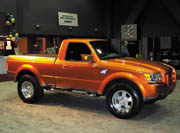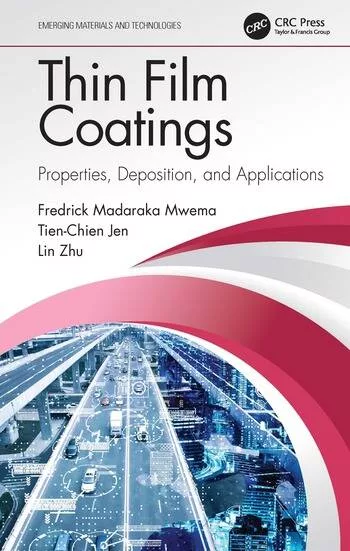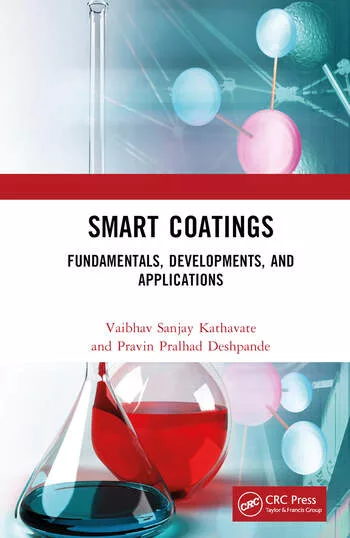Transparent Iron Oxide Pigments for Automotive Applications
- Provision of color with transparency
- UV absorption/protection
- Reduction in coloring cost
- Improved transparency to accentuate coating effects
The attributes of enrichment, beautification and protection are all essential in automotive finishes. The synthetic manufacture of low-cost, transparent iron oxide pigments ensures that the color shades are clean and consistent. The inherent property of iron oxide to absorb ultraviolet radiation along with its ability to make the product a colored transparent material makes it of particular importance for the coloration of automobiles. In this article, we will address each of these roles as well as dispersion characteristics and styling.

Pigmentary Features
The manufacturing processes of transparent iron oxide pigments allow for the control of physical and surface chemistry properties of the primary particles. The particle size is optimized to ensure that minimal light interference occurs, thus maximizing transparency. However, a consequence of the small particle size is high surface area and oil absorption values, similar to those of organic pigments. (More background information on the technology and manufacture of transparent iron oxide can be found in "Using Transparent Iron Oxide Pigments in Wood Finish Applications," PCI November 2000.)1
The demands of the different systems and complimentary pigments tend to require different surface chemistries. Therefore, the surface chemistry of the transparent iron oxide particles is manipulated within the manufacturing process, allowing for different compatibility and stability in coatings formulations. For example, acidic grades are not recommended for use with waterborne systems as the chemical balance can be disrupted and the resin precipitated. Conversely, in solventborne formulations, the highly charged acidic pigments tend to yield superior performance. This results in a range of colors with different performance characteristics. In light of this, it's important to understand the application so that proper pigment selection can be made.
Dispersion Processes
To achieve the nano particle size of transparent iron oxides, a manufacturing process is used that results in increased aggregation and agglomeration. To fully disperse the pigment, a high level of shear and energy is required. For relatively low viscosity systems, a bead mill containing glass, steel or zirconia media is preferred, although ball mills or attritors may also be used. Where high viscosity formulations are required (e.g., pastes or highly pigmented concentrates), two or three roll mills may be required. High-speed mixing with a Cowles-type blade will not provide sufficient shear to disperse transparent iron oxide pigments.
Although most automotive coatings are produced in-house, the time and difficulty associated with dispersing transparent iron oxides has led to these dispersions often being produced by specialty dispersion houses. Once the pigment is fully dispersed, the particle size is such that the resultant colloidal suspension is stable and good in-can stability is achieved. This is not the case with larger, dense particles, which often need additional stabilization through the use of rheology and/or charge modifiers in the formulation.

Automotive Applications
Transparent iron oxide pigments are widely used for automotive applications. Their primary application is in basecoat formulations in combination with effect and/or organic pigments. In these applications, the transparent iron oxide is used as a coloristic component as well as a low-cost UV absorber. Inorganic pigments provide long-term absorption, unlike sacrificial organic UV stabilizers, which have a finite life. For this application, it's important that the "through" transparency of the pigment is maximized and the surface charge is correct to result in the depth of effect desired.A second application is to tint clearcoats and lacquers. In these systems, transparent iron oxides are again used as enduring UV absorbers. Although used at very low loadings, recent formulations suggest that transparent iron oxides increase the "depth" of finish when used in clearcoats. Gold, brass or bronze finishes can be achieved when applying transparent iron oxides on metal handles, knobs, or wheels.
The final exterior application is the demand for transparent red iron oxide used to color turn signal indicators. This gives formulators a low cost alternative to the expensive dyes that have traditionally been used.
For vehicle interiors, transparent iron oxide pigments are used in the manufacture of polymeric fibers. Brown is used for its color space as well as to provide the vital UV protection for the trim fabrics, which are exposed to the sun's UV radiation for many years of the vehicle's life.
Color Styling
Fifty percent of global automobile basecoat systems use effect pigments, primarily micas and metallics. In North America, this rate increases to 60%. While shades of silver are a predominant result, a greater use of effect pigments in combination with other pigments4 is occurring. Red and "autumn" shades represent about one fifth of the North American market. Though blue shades are growing in popularity, it is believed that the market for these "autumn" colors will remain fairly constant. In contrast, the Japanese market remains dominated by blue and silver tones. When effect pigments are incorporated with other colorants, it's important that the colorant has good durability and transparency. Transparent iron oxide with its excellent light- and weatherfastness, UV absorption properties, and high degree of transparency is a primary choice for this type of coating.Transparent iron oxides are most commonly used in combination with micaceous or aluminum flakes to produce metallic effect finishes for automobiles.2 The natural color space of transparent iron oxide is yellow to brown. In combination with aluminum flake they give rise to colors from burnished silvers through gold to bronze. These colors, often called "autumn" shades or earth tones, are re-emerging as popular colors in U.S. automotive market.
Gold, bronze and metallic brown give a sense of grandeur and prosperity, relating to a luxurious lifestyle that people aspire to. Consequently these shades are most common on more prestigious automobiles. Additionally, the combination of a highly transparent pigment with effect pigments gives clean, deep colors. The more transparent, the sharper the color and effect produced. Often times, deep shade red and maroon can appear dirty in combination with aluminum and mica flakes. The inclusion of transparent iron oxide pigments accentuates the color depth and cleanliness.
Reduction in Coloring Cost
Transparent iron oxide can be used effectively to replace, in part, more expensive transparent organic pigments in the full color range. The combination of a low-cost, highly durable transparent iron oxide with the more expensive organic pigment can reduce the formulation cost while increasing the overall performance of the coating.UV Absorption
In addition to the valuable coloration provided by transparent iron oxides in combination with aluminum, micas and other effect pigments, transparent iron oxide pigments offer many important physical properties. In respect to coating protection, the UV absorption properties of the pigments are particularly important for imparting protection to transparent films.
Protection from attack and degradation by ultraviolet light is an important requirement of any coating. Long life in high UV environments is particularly important in transportation finishes where automobiles are often parked in intense sunlight for long periods. Even at low pigmentation levels, transparent iron oxides absorb enough ultraviolet light to provide enduring film protection. Pigmentary UV protection of this type is preferable to organic UV absorbers because the protection is not degraded by the radiation. Transparent iron oxide may be introduced at a level to provide UV absorption without imparting significant color in deeper colors.

Automotive Coating Technology
Automotive coatings manufacturers are under constant pressure from environmental restrictions and sensitivities. They have been restricted from certain pigment types in the past, but the current pressure has shifted to the type of solvents used in the formulations. The original equipment manufacture (OEM) market is under the greatest pressure to replace solventborne systems with alternatives. Approximately 50% of this market has moved to waterborne basecoat formulations. A large proportion of the remaining volume is still solventborne and to a lesser extent UV cure systems. In the refinish coatings market, the technology remains predominantly solventborne.
Clearcoat technology is moving to a mixture of powder coating, high solids content polyurethanes and waterborne formulations. Transparent iron oxide pigments were originally developed for the solventborne market and, as such, have a well-established position as functional colored pigments. It is recognized that it's more difficult to disperse pigments into waterborne formulations, and for transparent iron oxides, which are notoriously difficult to disperse, this has presented a challenge. Coinciding with this shift toward waterborne formulations, new transparent iron oxide pigments have been developed that provide superior compatibility with these systems.
Conclusion
Transparent iron oxide pigments offer attractive coloristic features and enduring UV protection, giving formulators the flexibility to reduce cost. As consumer preferences shift toward "autumn" shades and earth tones, transparent iron oxides can play a primary role in your color palette.
Synthetic transparent iron oxides are readily available in powder form or in dispersions for solvent- or waterborne applications. They offer a versatile range of shades, from yellow to brown, offering the automotive formulator the benefits of excellent transparency, high durability and UV absorption, non-bleeding, economy and non-toxicity.
Acknowledgement
The photographs used in this article do not necessarily depict the application of the products. We would like to thank Valspar Refinish for the provision of the color formulation, and colleagues at Johnson Matthey Pigments and Dispersions for their help and advice in preparing this article. c
For more information on iron-oxide pigments, contact Johnson Matthey Pigments and Dispersions, 11400 New Berlin Road, Jacksonville, FL 32226; phone 800/770.2634; fax 904/751.6828; website www.matthey.com; e-mail mckenmf@jmusa.com; Or Circle Number 122.
References
1 "Using Transparent Iron Oxide Pigments in Wood Finish Applications," Wright P., McKenna M., PCI, November 2000.2 Coatings World, July 2001, pg16.
3 "Feel Good Factor," Middleton J. and Barron D., PPCJ, September 2001.
4 Automotive Colour Approach, Ciba Geigy pigments division.
Links
Looking for a reprint of this article?
From high-res PDFs to custom plaques, order your copy today!








